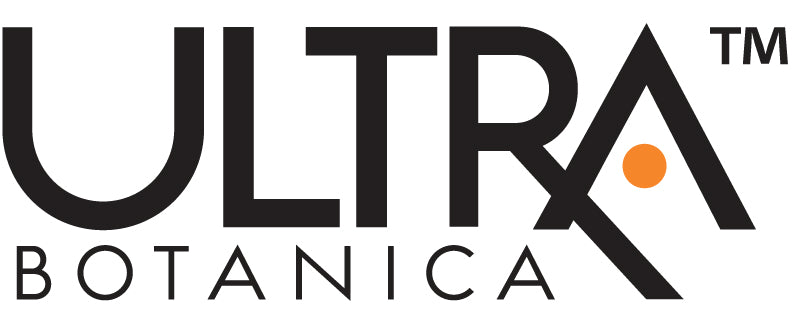Have you ever felt overwhelmed staring at the sunscreen aisle? You're not alone. With so many options, it's hard to tell which products are truly safe and which ones qualify as toxic.
We apply these sunscreen lotions directly to our skin—our body’s largest organ. Yet many of them contain ingredients linked to hormone disruption and allergic reactions. It’s no wonder there's growing concern about the rise of toxic sunscreen in today's most popular brands.
At the end of the day, most of us just want reliable sun protection that won’t compromise our health. Unfortunately, many common sunscreen products include chemicals you'd shun if you knew how toxic they are.
That’s why this guide exists—to help you cut through the confusion and confidently choose safe, effective sun protection for the summer season ahead.
The Lowdown on Common Sunscreen Ingredients
Concerns about the health effects of chemicals in many sunscreens have been growing. Troublingly, much of this information was known but not acted upon by manufacturers.
Back in 1999, the FDA asked sunscreen makers to research certain chemical ingredients.
Yet for over 20 years, little progress was made. When manufacturers failed to act, the FDA finally stepped in and conducted its own studies on how much of these chemicals are absorbed into the body.
Most sunscreens rely on either mineral or chemical UV filters. Mineral sunscreens use zinc oxide and titanium dioxide, while chemical sunscreens use a range of synthetic filters.
When it comes to active ingredients, mineral options are often considered the safer choice. Here's a closer look at how these ingredients work and what to watch for.
Chemical Sunscreens: What to Know
Chemical sunscreen filters are active ingredients that at least theoretically protect your skin by absorbing the sun’s harmful ultraviolet (UV) rays. They work by converting UV energy into heat, which is then released from the skin.

How Chemical Sunscreen Filters Work
Chemical sunscreen filters contain molecules that absorb UV radiation, a process that occurs when the energy from UV rays excites the molecule's electrons.
This excitement leads to a chemical reaction that converts UV energy into heat, which is then released from the skin. The process prevents the UV radiation from penetrating the skin, reducing the risk of sunburn, premature aging, and skin cancer.
When selecting a sunscreen product with chemical filters, consider your individual skin type and needs. If you have sensitive skin, look for products labeled as "hypoallergenic" or "fragrance-free" to minimize the risk of irritation.
If you're concerned about environmental impact, opt for products that use eco-friendly filters or physical sunblock instead.
A few of the chemical UV filters in question are oxybenzone, avobenzone, homosalate, octinoxate, octocrylene, and octisalate. Unfortunately, many of these ingredients still linger in popular brands. (More on them below.)
The FDA has raised concerns about the safety and effectiveness of certain common sunscreen chemicals, particularly regarding how much of these UV filters are truly absorbed into the body.
To better understand the risks, the agency conducted its own absorption studies. Based on the findings, the FDA introduced new guidelines to address potential health issues tied to these ingredients.
Sunscreen Chemicals Pose Human Hazards
There are several types of chemical sunscreen filters, each with its own unique characteristics and benefits. Some of the most common chemical filters include:
Oxybenzone
Oxybenzone, a prevalent ingredient in many toxic sunscreens, has raised significant health concerns due to its potential adverse effects on humans. One primary issue is its role as an endocrine disruptor, meaning it can disrupt hormone function.
Studies suggest that oxybenzone may affect estrogen production in women and testosterone production in men, potentially leading to hormonal imbalances and reproductive disorders.
Notably, research has indicated that adolescent boys exposed to oxybenzone exhibited lower testosterone levels, and both men and women showed signs of thyroid dysfunction.
Oxybenzone (BP-3) has also been associated with allergic reactions. These allergic responses can manifest as skin rashes, severe itching, and in rare cases, more severe reactions requiring medical attention.
The systemic absorption of oxybenzone is another concern. Research shows that after topical application, oxybenzone can be detected in urine samples and breast milk, reflecting its broad penetration into the bloodstream.
This widespread absorption raises questions about its long-term effects, and its potential to accumulate in the body over time.
Although the full extent of these health implications remains under investigation, the pervasive presence of oxybenzone in the human body underscores the need for caution and further research.

Octinoxate
Octinoxate, also known as octyl methoxycinnamate, is a chemical commonly used in sunscreens and personal care products to absorb UV-B rays. But concerns have been raised regarding its potential adverse effects on human health, including:
Endocrine Disruption: Octinoxate may act as an endocrine disruptor that interferes with hormone functions.
Animal studies have shown that octinoxate exposure can affect thyroid hormone production and alter reproductive hormone levels, including estrogen and testosterone. This may lead to developmental and reproductive problems.
Allergic Reactions and Skin Sensitivity: Contact dermatitis is a known side effect of octinoxate, characterized by itchy and inflamed skin.
Octinoxate can degrade under UV exposure, potentially leading to free radicals that cause skin damage and premature aging.
Environmental Impact: Octinoxate has also been implicated in environmental harm, particularly to marine ecosystems, coral reefs, and damage to marine life, which has led to bans in Hawaii and Palau.
Homosalate, Octisalate, Octocrylene, Avobenzone...
As a group, none of these would be considered safe or optimal ingredients to put on skin day in and day out. Most of them are hormone disruptors, like oxybenzone and octinoxate.
Octocrylene was found to absorb through the skin at about 14 times the FDA's cutoff for toxic systemic exposure. Octisalate penetrates the skin at 10 times the FDA cutoff, and avobenzone absorbed at 9 times the FDA cutoff.
Homosalate and octocrylene have been linked to endocrine (hormone) disruption. Octocrylene has additionally been shown to cause environmental harm to marine ecosystems.
Why Chemical Sunscreen Filters, Then?
Chemical sunscreen filters do offer advantages. Benefits include:
- High SPF ratings: Chemical filters can provide high SPF ratings, making them effective against UV rays.
- Cosmetic elegance: Chemical filters can be formulated to provide a lightweight, non-greasy texture that's aesthetically pleasing.
The question to ask is—are they worth the risks?

Mineral Sunscreen Filters: A Safer Alternative?
Mineral sunscreens, containing active ingredients like zinc oxide and titanium dioxide, offer a safer alternative to chemical sunscreens.
Unlike chemical sunscreens that absorb UV radiation, mineral sunscreens act as a physical barrier, reflecting and scattering UV rays away from the skin.
This provides immediate protection upon application, eliminating the need for a waiting period before sun exposure.
Also, in contrast to chemical sunscreens, zinc oxide and titanium dioxide are recognized as safe and effective by the U.S. Food and Drug Administration (FDA) and are less likely to cause skin irritation, making them suitable for sensitive skin.
Lastly, mineral sunscreens are considered more environmentally friendly. Mineral sunscreens are less likely to contribute to environmental issues, making them a preferable choice for eco-conscious consumers.
Using sunscreens formulated with zinc oxide and titanium dioxide are great ways to block harmful UV rays.
The Environmental Working Group (EWG) says mineral sunscreens are safer. They state the FDA recognizes mineral sunscreen ingredients zinc oxide and titanium dioxide as "generally regarded as safe and effective" (GRASE).
It's important to be sure mineral sunscreens do not contain additional unsafe chemical ingredients. Alway read labels.
Concerns Beyond Our Bodies: Sunscreen and the Environment
It's not just your body you need to worry about when using most sunscreens, as suggested above. An estimated 14,000 tons of sunscreen washes into our oceans every year. These chemicals then wreak havoc on delicate ecosystems.
For instance, toxic sunscreen has been shown to damage and destroy at-risk coral reefs, according to National Geographic. So, what can we do? Choose mineral sunscreens to help both ourselves and our oceans.
Many popular destinations have in fact, banned certain chemical sunscreens due to their impact on the ecosystem and oceans.

EWG Verified Safe Sunscreen Choices
It can be tricky to find safe sunscreens. Luckily, the EWG offers an extensive guide that shares the safest sunscreens based on their research. They also highlight sunscreens to avoid.
You do have options, so researching your options before the summer season is crucial, and especially for children you may be buying for, as their exposure to chemicals has greater implications. Choosing EWG's sunscreens is a smart choice for the skin health for you and your loved ones.
Mineral Sunscreens and Nanoparticles: What You Need to Know
As concern about sunscreen chemicals grows, mineral sunscreens, especially those containing zinc oxide nanoparticles, have risen in popularity. What are nanoparticles, and should you worry about them?
Nanoparticles are extremely small particles (1-100 nanometers) with unique properties because of their tiny size.
In sunscreens, they help the mineral spread more easily and prevent the chalky white look of traditional zinc oxide formulas.
The Debate Around Nanoparticles
Nanoparticles, particularly those of titanium dioxide (TiO₂) and zinc oxide (ZnO), are commonly used in sunscreens to provide effective ultraviolet (UV) protection while remaining transparent on the skin.
The safety of these nanoparticles has been extensively studied, and current evidence suggests that they do not pose significant health risks when applied to skin.
Research indicates that these nanoparticles remain on the skin's surface and do not penetrate past the outer layer of skin.
However, legitimate concerns have been raised about inhaling these nanoparticles, especially from spray-on sunscreen formulations.
Inhaling these particles could lead to respiratory issues, as the lungs may have a hard time clearing such small particles, potentially allowing them to enter the bloodstream. So, it's advisable to use sunscreen lotion instead of sprays to minimize inhalation risks.

Getting Adequate Vitamin D
It's a tough question — is it healthy to slather on sunscreen every time you step outside? The sun does more than just threaten sunburn. It also helps your body make vitamin D.
This vitamin is super important for strong bones, a healthy immune system, mood regulation, and much more. So, how do you balance sun safety with getting enough of this crucial vitamin?
Many people are insufficient in vitamin D. This is because they spend a lot of time indoors. Or they always wear sunscreen. It’s a tricky balance. You want to protect your skin. But you also need sunlight for your health.
Here are a few things to consider:
Time of Day: The sun is strongest between 10 a.m. and 2 p.m. You can make vitamin D faster during this time. But this is also when the risk of sun damage is highest. Strike that balance by spending 20 to 30 minutes in the sun during this time without sunscreen. Then apply sunscreen for extended time in the sun. This way you can try to strike your "Goldilocks" zone.
Skin Tone: People with darker skin need more time in the sun to make the same amount of vitamin D as people with lighter skin.
Location: If you live far from the equator, the sun's rays are weaker. You might need more sun exposure to bare skin, especially in the winter. Even in fall and spring the sun's rays are weak enough in most of the U.S. to limit your vitamin D benefits.
Supplementation: Taking a vitamin D supplement can help you meet your daily needs. This is especially useful if you're concerned about getting enough sun exposure.
Consider how much time you spend in the sun to get vitamin D. Think about your skin type and where you live. Maybe you don’t need sunscreen for a quick 15-minute walk.
But if you're planning a day at the beach, sunscreen is a must. The goal is to find a balance. Get enough sun for vitamin D. But also protect yourself from the harmful effects of the sun.
An important point regarding vitamin D... because there are so many individual and climactic variables involved in vitamin D absorption, you should get your holistic doctor to test your vitamin D levels twice per year to be sure you're in the optimal zone of 50 to 80.
Safe Sun Habits: More Than Just Sunscreen
Depending solely on sunscreen might not be enough to protect you. That's because experts at Stanford University concluded that sunscreen use alone is risky.
In fact, frequent sunscreen users get more sunburns than people who shield themselves with clothing and hats.
In this context, sun safety encompasses multiple tools. Think sunglasses, hats, UV umbrellas, and shade. These create an added line of defense against overexposure to the sun. This way you also won't have to rely only on finding nontoxic sunscreen too.
Conclusion
When it comes to toxic sunscreen, making the best choices comes down to you doing your homework and arming yourself with facts about ingredients. Make careful decisions on safe sun protection.
With some care, you can enjoy the outdoors safely while protecting your body, and our world. ☀️

Frequently Asked Questions
1. What are the safest ingredients in sunscreens, according to the FDA?
According to the FDA, the safest ingredients in sunscreens are zinc oxide and titanium dioxide, which are mineral UV filters.
These ingredients physically block and reflect ultraviolet rays rather than absorbing them, and they are less likely to cause irritation or hormone disruption. The FDA classifies both as "generally recognized as safe and effective" (GRASE).
For extra assurance, many consumers look for EWG verified sunscreen products. These are vetted by the Environmental Working Group for safety and effectiveness, ensuring they contain only safe UV filters and avoid harmful additives.
2. What toxic sunscreen ingredients are known to cause hormone disruption?
Toxic sunscreen ingredients known to cause hormone disruption include oxybenzone, octinoxate, homosalate, avobenzone, octocrylene, and octisalate.
These chemicals, commonly found in toxic sunscreen formulas, have been linked to interference with hormone function, including estrogen, testosterone, and thyroid hormones.
Studies have shown that some of these ingredients are absorbed into the bloodstream at levels exceeding FDA safety thresholds, raising concerns about long-term health effects.
3. What other problems are associated with chemical sunscreen ingredients?
In addition to hormone disruption, chemical sunscreen ingredients found in toxic sunscreen are associated with several other problems. These include skin irritation, allergic reactions, and the potential to generate free radicals when exposed to sunlight, which can lead to premature aging and skin damage. Some of these chemicals, like octinoxate and oxybenzone, also pose serious environmental risks, particularly to coral reefs and marine life, which has led to bans in certain coastal regions.
The widespread use of toxic sunscreen ingredients raises both health and ecological concerns.





Share:
Dehydration: Signs, Effects and Prevention Strategies
Navigating Summer Hazards: Essential Safety Tips